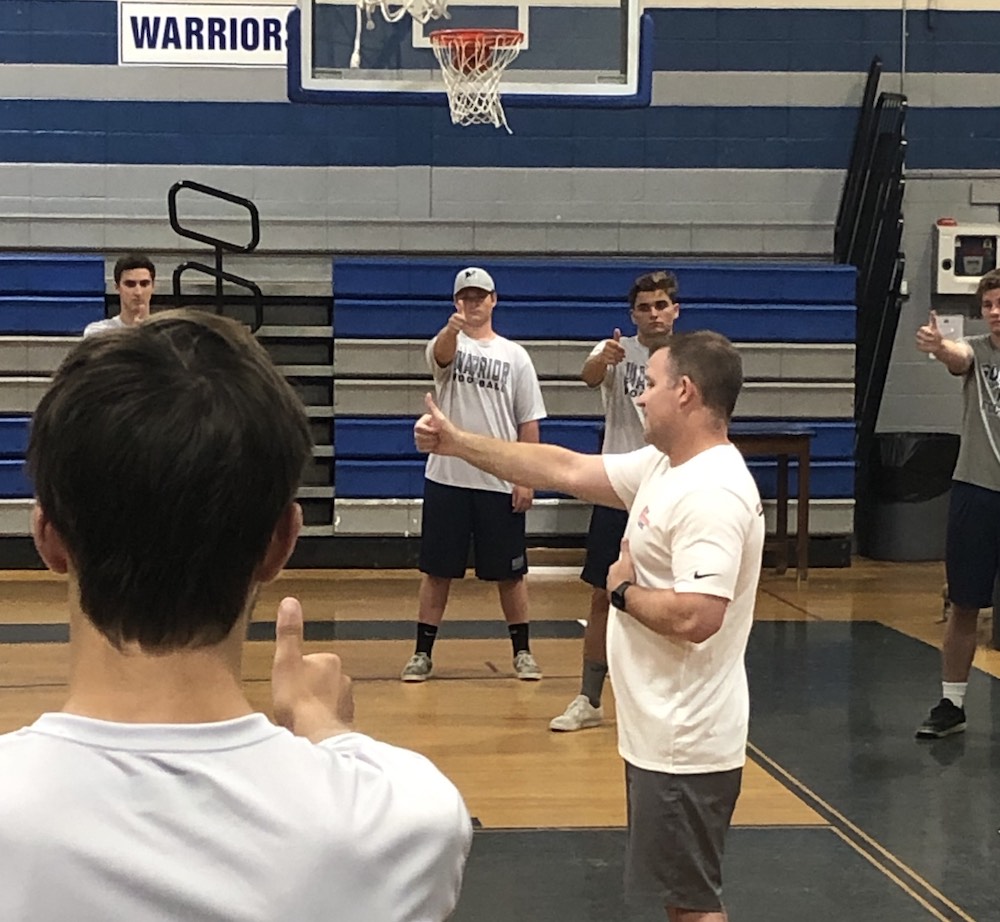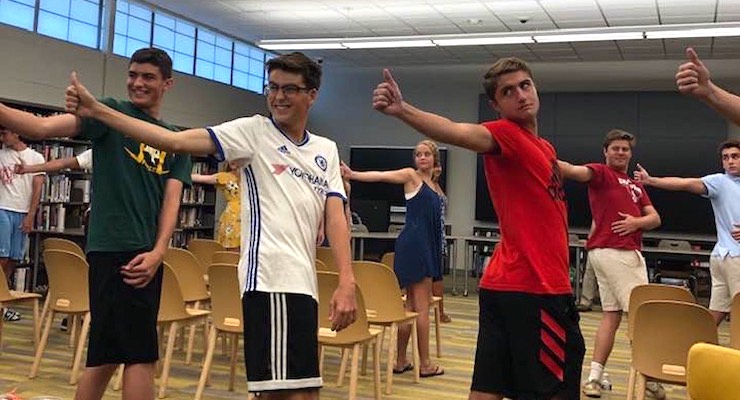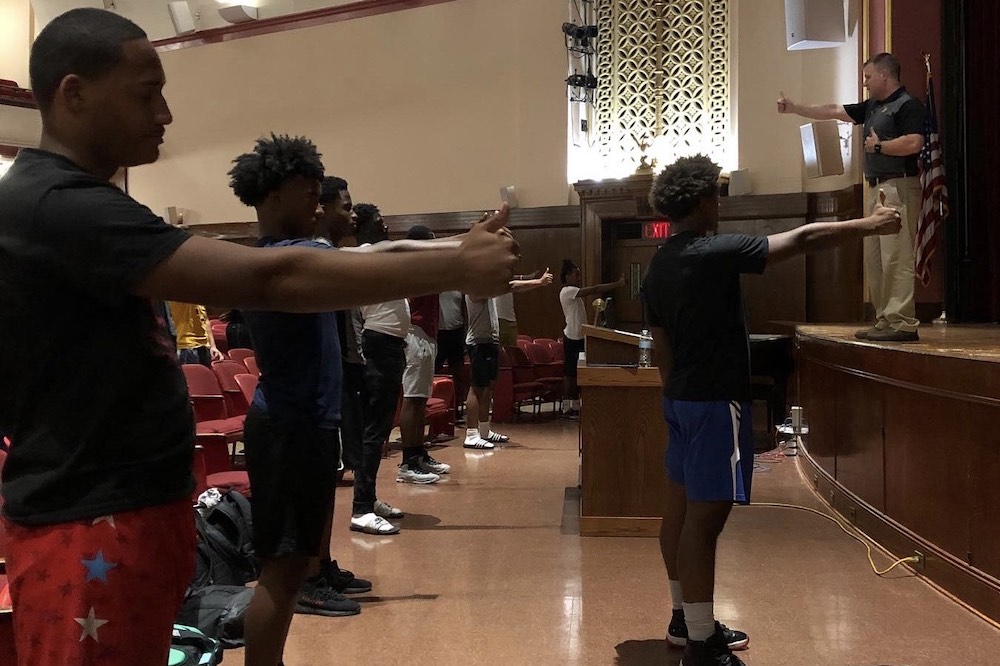Help! I’m a Coach and Want to Teach the Mental Game – Part I
If you’re a soccer coach, chances are you religiously keep up with the latest drills and methods to improve the technical and tactical aspects of your team.
You no doubt study the latest trends in strategy, formations, and styles of play to stay one step ahead of the competition on the pitch.

But if you’re like most coaches, you probably don’t know where to go for help on the mental game.
Read: MAKING THESE COVID-19 DAYS COUNT WITH BRYAN PRICE & JULIE FOUDY
Even though U.S. Soccer has designated the psychological component as the 4th pillar of player development, it is the one that is the most difficult for coaches to develop and the pillar that has the fewest resources for coaches and players.
And yet, that psychological component might be the most important pillar of development, especially for players hoping to compete at an elite level.

Read: IN SOCCER, CONTROL THE CONTROLLABLES
According to an article published last year on how the U.S. Women’s National Team was developing their mental game, the author highlighted this gap: “Ask any coach if mental training is important and almost all will say ‘yes,’ Ask if they’re actually providing any mental training and the answer is almost always ‘no.’”
But don’t panic, Soccer Today has you covered with a series of articles for coaches who are looking to improve the mental toughness of their teams, but don’t know where, when, or how to start.
This is Part I. In Part II of the series on Teaching the Mental Side of the Game, I provide five activities that every coach should have in their mental game toolkit.
In Part III, the last in the series on Teaching the Mental Side of the Game, I give coaches an introduction to visualization and pre-competition routines that are guaranteed to get your team playing at their best when it matters the most.

So Where Do I Start?
Let’s start with some helpful definitions of the mental game and mental toughness.
The mental game includes all of the skills needed to perform at our best. These include skills like goal-setting, energy management, emotion-regulation, focus, resilience, and the ability to perform under pressure.
I define mental toughness as the knowledge, ability, and discipline to play at our best, regardless of the circumstances.
- Can you play at your best when going against an inferior opponent and when going against a formidable foe?
- Can you play at your best when nobody’s in the stands and when there are tens of thousands watching?
- Can you play at your best when you’re up by 4 goals and down by the same?
- Can you play at your best when you’re tired, sore, or feeling sorry for yourself?
- Can you play at your best when the weather is poor or when the referees make unfair calls against you and your team?
- Can you play at your best when you come to the pitch with 80% of your “A” game – can you extract 100% of that 80%?
Many players mistakenly assume that the most talented players are also the mentally toughest, but as coaches, you already know this is false.
This is where coaches can educate players by explaining how mental toughness is independent of talent.

And mental toughness, as we’ve often seen on the pitch, can sometimes make up for a lack of talent.
On the other hand, as Julie Foudy noted in this Soccer Today interview about the difference-maker in the 1995 World Cup, talent – even superior talent – cannot always make up for a lack of mental toughness.
The former U.S. team captain and Hall of Famer said, “Although we trained super hard and were physically fit, mentally we were not at our best. And it showed. We lost to Norway in the semi-final, in a game we should’ve won.”
The Mind-Body Connection
Before your players can buy into mental skills training, it’s imperative to buy into the concept of the mind-body connection.
After all, if you don’t believe that the mind influences your physical performance, then mental skills training is a wasted endeavor. Male athletes are usually the most skeptical about this, but women can be as well.
To make them understand this connection, ask players if they’ve ever been startled awake by a nightmare. There they are, startled out of a deep sleep, sweating, muscles tensed up, rapid heart rate, and shallow breathing. When they awaken, they find themselves in their comfy bed with no threats around, yet they could’ve sworn the horror of that dream was real.
Or ask them if they’ve ever cried during a movie scene or clutched a blanket over their head on the couch while watching a horror film. Again, in the friendly confines of their living room, they sit and watch, as their pulse races and the hairs on their arms and the back of their neck stand up.
Why? This happens because the mind often has difficulty differentiating fantasy from reality. (Hint: it’s also why visualization and imagery exercises are so effective in building confidence – more on that in a subsequent article).
In soccer, the mind-body connection is on full display when a player stands over the ball for a PK with the game on the line. In practice, players may not feel any external pressure and consistently hit the upper 90’s without thinking twice about it.

With the game on the line, however, and potentially thousands of eyes on their every move, players start to over-think. What if I miss? How will my teammates react? What will the fans do? Have I practiced enough? Didn’t I miss the last time I was in a pressure moment?
When that happens, the brain sends signals and chemicals to the body indicating that there’s a threat. The player’s pulse races and muscles tighten, making it more difficult for blood to flow where it needs to go. It may even become difficult to breathe (thus where the phrase “choking” comes from).
The results, you can imagine, are often not good, which only reinforces how the mind and body will react to future moments of stress in competition.
If you didn’t have the full attention of your players when you were talking about nightmares and scary movies, you should have it after painting this scenario.
Ask them if they have the mental skills needed to counteract these fight-or-flight reactions when the game is on the line and they’re freaking out with stress and anxiety?
No? I’m betting you have their attention now.

The Thumb Exercise: An Aha Moment
For those stubborn players who still don’t see the value of mental skills training, even after discussing the pressure PK scenario, here’s an exercise that should convert all remaining skeptics.
The “thumb exercise” is one that I do with all my athletes and teams. In my opinion, it is the most powerful illustration of the self-imposed limitations we put on ourselves. It also never fails to produce an “aha” moment that showcases the power of our minds.
Ask your team to spread out so they can swing their arms around and not hit their neighbor. Ask them to stand with their feet shoulder-width apart and let them know that their feet will not move for the duration of the exercise.
Then instruct them to hold their right arm straight out in front, parallel to the ground. Ask them to stick up their right thumb and focus intently on as many details about their thumb as possible.
Have them focus on the nail, the nail bed, and the wrinkles around the thumb’s knuckle.
Then, keeping their arm still parallel to the ground, have them rotate their upper-body around to the right, without moving their feet at any time in the process.
Tell them to rotate back as far as they can go. Once they’ve gone as far as they go, have them look past their thumb and find an identifiable mark on the wall or the scenery behind them. Pick out that spot and memorize it. Once they’ve done that, have them slowly and gently rotate back around to the front and drop their arm.
Now tell them they’re going to do the same routine again, but this time, they’re going to close their eyes and only visualize the same movements. They won’t be moving their arms or rotating their upper-body – they’re simply going to visualize doing those movements with their minds only.
Read off the same instructions as before, but this time, after they’ve visualized reaching that first spot where they ostensibly couldn’t go any further during the first round, ask them to visualize rotating their body another six inches. Have them visualize going past their original spot and going even further than the first exercise.
After doing that, have them visualize rotating back around to the front and drop their arms. Have them open their eyes.
Now tell them you’re going to do it all again, one last time. But this time their eyes are going to be open and they are going to physically do all of the movements. Read the same instructions, only this time see if they can rotate their bodies to the new spot they visualized. If you want, see if they can go even further.
In doing this with over 700 athletes, I’ve never had an athlete fail to go past his or her initial spot. In most cases, athletes are able to exceed their initial effort.

This is Why the Mental Game Matters
But why? The instructions for the initial iteration are to rotate as far as they can go, and yet, everyone is able to exceed that after visualizing doing so.
I believe there are several reasons. First, the self-imposed limitations we put on ourselves, including our natural inclination towards comfort over discomfort, are powerful constraints on our performance. In other words, we don’t go as far as we’re capable of going; we go as far as it’s comfortable to go.
Second, never underestimate the negative effects that result from the need to fit in and avoid looking like a “try-hard.” These are especially influential motivators for teenage and collegiate athletes dealing with peer pressure, and in their worst manifestation, they inhibit performance.
Finally, athletes are able to exceed their initial performance in the thumb exercise because visualizing their success makes them more intentional about their actions and the results they want to achieve.
This may be just a silly thumb exercise, I tell my athletes, but where else in their lives are they putting self-imposed limitations on their performance? On the pitch? In the classroom? In their professional lives? And in their personal relationships?
Why not give them the mental skills training to become more intentional about their actions and to realize the success they visualize for themselves?
Upcoming in Part II: Pre-practice and pre-game routines to get your team more focused and confident before the competition.
Read: MAKING THESE DAYS COUNT: SOCCER STAR JULIE FOUDY ON WHY MENTAL SKILLS COUNT





